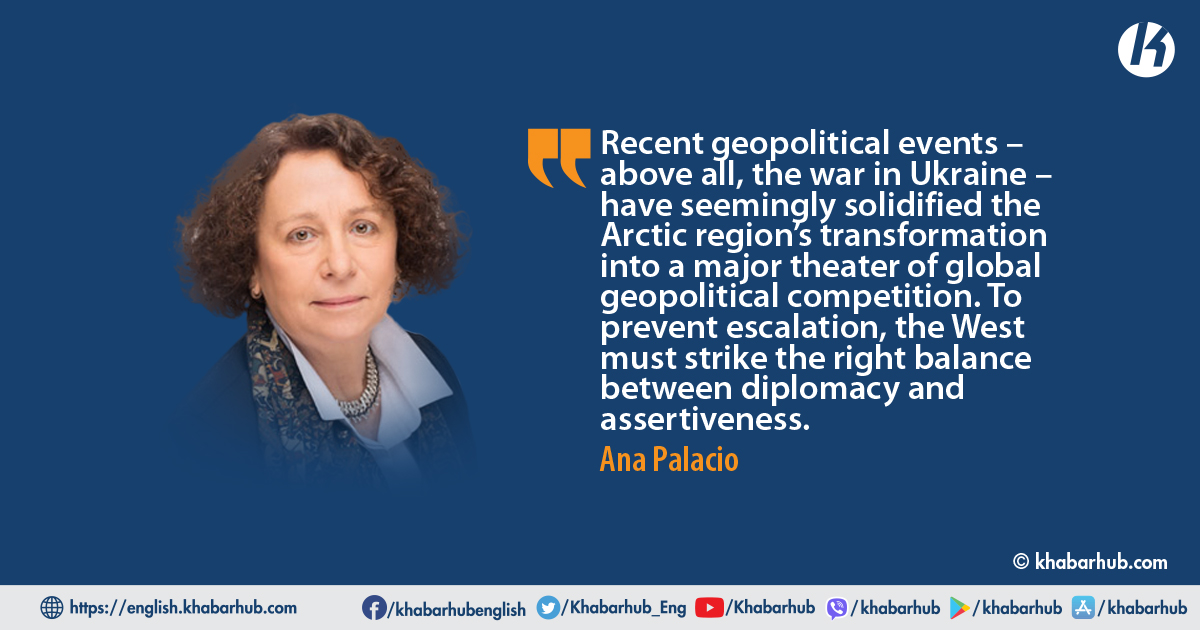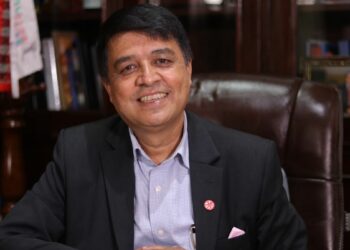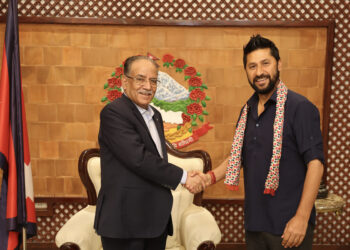Less than a month after Russia’s brutal invasion of Ukraine, NATO launched its largest exercise in the Arctic in three decades, with as many as 30,000 troops from 27 countries participating in land, sea, and air drills.
Operation Cold Response 2022, hosted by Norway, highlights just how tense things have become in a region that has long been largely immune to geopolitical volatility.
Of course, the Arctic’s strategic importance is nothing new. During the Cold War, the region offered the shortest flight path for intercontinental ballistic missiles between the United States and the Soviet Union, as well as plenty of cover for submarines, thanks to deep ice and inhospitable conditions for ships.
But the end of the Cold War and the dissolution of the Soviet Union ushered in an era of declining militarization and increasing cooperation, especially on environmental protection.
This shift was supported by the Arctic Council – an intergovernmental forum established in 1996 – which declares in its founding document (albeit in a footnote) that it should not “deal with matters of military security.”
In recent years, however, the Arctic has been becoming an increasingly adversarial issue again.
This is partly because of climate change – the Arctic is heating up 3-4 times faster than the global average – which has enabled the establishment of new commercial transit routes and unlocked greater access to, and competition over, the region’s natural resources.
To hope for an end to geostrategic competition in the High North would be naive. But efforts must be made to avoid escalation of tensions.
China, in particular, has been working to increase its presence. In 2018, the country proclaimed itself a “near-Arctic state” and announced plans to build a Polar Silk Road – connecting North America, East Asia, and Western Europe, through the Arctic Circle – as part of its Belt and Road Initiative.
Those plans, together with China’s broader commitment to play a central role in the Arctic’s development, were enshrined in China’s 14th Five-Year Plan (2021-25).
Recent geopolitical events – above all, the war in Ukraine – have seemingly solidified the Arctic region’s transformation into a major theater of geostrategic competition.
Alarmed by Russia’s aggression in Ukraine, Finland and Sweden have broken with their long-standing traditions of neutrality and applied to join NATO.
This does not bode well for the Arctic Council. Once Finland and Sweden’s NATO accession process is complete, Russia will be the forum’s only non-NATO member.
Already, the rest of the Council’s members have boycotted any future talks held in Russia, which currently holds its rotating chairmanship.
Then there is Russia itself. Though its military-strategic focus has traditionally been on the Black Sea and the Caucasus, Russia views the High North as an integral part of the larger Eurasian space.
There is an important economic component to this logic: the Arctic territories account for a tenth of Russia’s GDP and a fifth of its exports.
But it is also strategic: Russia reportedly maintains some 475 military assets in the Arctic, in addition to its Severomorsk-based Northern Fleet.
In its latest Arctic strategy, published in 2020, Russia assumes an openly assertive stance.
Departing markedly in both tone and content from its previous iteration, the strategy emphasizes the urgency of developing the Northern Sea Route as a “globally competitive national transport corridor” and ensuring Russia’s “sovereignty and territorial integrity.”
For Russia and China – which announced a partnership “without limits” just before Russia’s invasion of Ukraine – cooperation in the High North has obvious benefits.
China can take advantage of Russia’s extensive institutional presence – including its technological infrastructure and research-and-development activities – in the region, and access shorter and cheaper routes to the major economic centers of North America and Western Europe.
For Russia, the main benefit lies in strengthening its broader relationship with China – a powerful ally in its efforts to challenge the West’s global economic and geopolitical dominance.
If Russia withdraws over concerns about NATO’s dominance, regional volatility would increase. That, in turn, would create a strategic opening for China to gain a foothold in Arctic governance.
As an added bonus, China could fill technology gaps that have arisen from Western sanctions, much as the United Arab Emirates has done for the Russian natural-gas company Novatek.
The remilitarization of the High North has been decades in the making. Yet the West is only beginning to wake up to the challenge.
The latest NATO Strategic Concept, adopted in June, identifies Russia’s “capability to disrupt Allied reinforcements and freedom of navigation” in the High North as a “strategic challenge.”
The European Union’s Arctic Policy, updated in 2021, fails to lay out a coherent or integrated approach.
To hope for an end to geostrategic competition in the High North would be naive. But efforts must be made to avoid escalation of tensions.
To this end, the West – working with like-minded partners, such as Japan and South Korea – must strike the right balance between diplomacy and assertiveness. Efforts to preserve the Arctic Council are essential.
If Russia withdraws over concerns about NATO’s dominance, regional volatility would increase. That, in turn, would create a strategic opening for China to gain a foothold in Arctic governance.
(Ana Palacio, a former minister of foreign affairs of Spain and former senior vice president and general counsel of the World Bank Group, is a visiting lecturer at Georgetown University)
Copyright: Project Syndicate









Comment